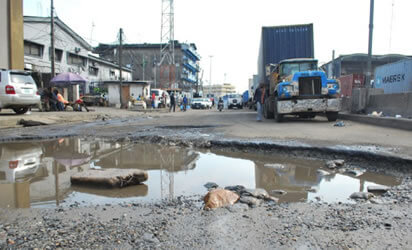Operators in the Nigerian maritime sector has lamented how bad roads and the menacing Apapa gridlock, which they described as a monumental national disgrace, is frustrating operations at the nation’s seaports.
According to the Chairman, Seaport Terminal Operators Association of Nigeria (STOAN), Princess Vicky Haastrup, who spoke in her office recently, terminal operators are working under the harshest business environment, in spite of the huge investments they have made towards developing the ports.
She said, “The situation in Apapa particularly as it relates to access to the port is a monumental national disgrace. How can a sector that has such huge potential and that generates billions of naira for government be left to so degenerate? Government is looking for oil but we have a sector that has the capacity to give you all the revenue you need yet the sector is suffering. Why has it not been attended to?”
The STOAN Chairman said the large number of tank farms located within Apapa has also compounded the chaotic gridlock, while more licenses are still being issued to new tank farm owners.
She also asked the Federal Ministry of Works, Power and Housing to urgently reopen the bridge exiting Apapa at Leventis/Area B, which has been shut down for several months without any visible sign of work being carried out on it.
Also speaking, the Africa Communication Manager of Maersk, Augustine Fischer, said the poor condition of roads in and out of the Apapa area of Lagos State remains a major blight on port operations in Nigeria.
He argues that the two seaports in Lagos handle more than sixty percent of goods imported into country. While the volume of cargoes imported into the country has been on the rise —increasing from about 35 million metric tonnes in 2006 to more than 80 million metric tonnes 12 years later —the roads through which these goods are taken out of the port to their final destinations have gone from bad to worse.
“The poor road condition coupled with a lack of parking lot for trucks and proliferation of tank farms in Apapa, means these trucks have to spend days – sometimes as much as 10 days – to cover a short distance of less than 5km to enter the port to drop off, or take delivery of cargo.
“The resultant effect is a backlog of cargoes at the port. Cargoes that should ordinarily exit the port within three days after discharge from the ship could remain in the port for as long as 21 days, waiting for trucks.
“The best solution to the Apapa traffic congestion is to fix the roads and seek alternatives to cargo evacuation. The port has increased in efficiency and capacity but the port access roads have deteriorated progressively since they were built,” Fischer said.






